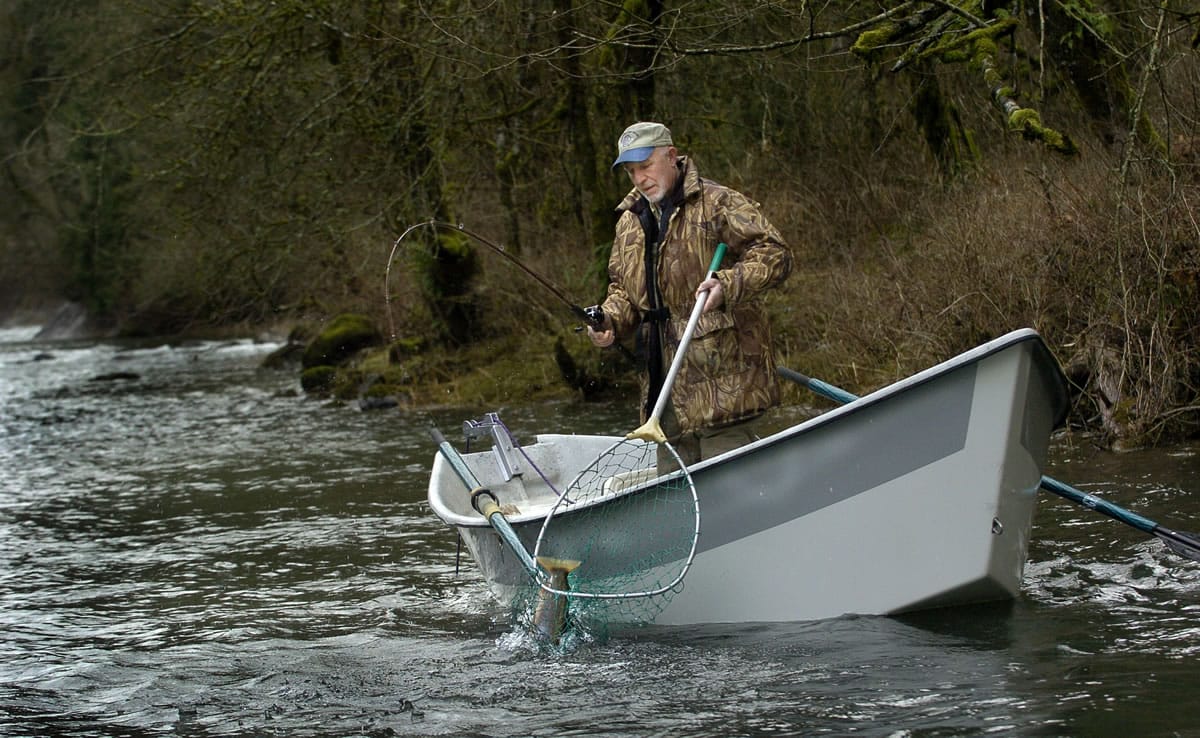The East Fork of the Lewis River will become a wild steelhead gene bank with the planting of hatchery-origin winter and summer steelhead ended, the Washington Department of Fish and Wildlife announced Monday.
Steelhead smolts programmed for release in 2014 in the East Fork of the Lewis River will be shifted to Salmon Creek and the Washougal River.
Fishing is expected to continue in the East Fork Lewis to catch hatchery fish, which will be returning for at least two more years, said Cindy LeFleur, regional fish program manager for the Department of Fish and Wildlife. Catch-and-release fishing for wild steelhead may be allowed in later years.
Salmon Creek will get 20,000 additional winter steelhead, bringing its total to 40,000. The Washougal will get 25,000 additional winter steelhead, bringing the winter total to 85,000. The Washougal will get 10,000 more summer steelhead, making the summer total 70,000.
The designation of the East Fork of the Lewis as a wild steelhead gene bank was the unanimous recommendation of the Steelhead Management Work Group, 20-member panel that has been meeting monthly with state fish managers in Southwest Washington since September.
The group also considered the Washougal River.
Hatchery releases also will end in the North Fork of the Toutle and Green rivers. Wind River, which has not been stocked with steelhead since 1997, also will be off-limits to future releases.
No home has been found yet for the 25,000 young steelhead earmarked for the North Fork Toutle and Green rivers.
Setting up a network of gene banks is one of a number of strategies endorsed by the department’s Statewide Steelhead Management Plan, adopted in 2008.
“We are building a future where wild steelhead — our state fish — can be enjoyed as part of the natural heritage of our state,” said Phil Anderson, agency director. “We will continue to support fisheries with hatchery production in selected areas of Southwest Washington.”
Thomas Buehrens, a steelhead research scientist for the Department of Fish and Wildlife, said studies show hatchery steelhead survive at lower rates in the wild in all stages of their life cycle compared to wild steelhead.
“This is the right thing to do even though it’s my home water,” said Ed Wickersham of Ridgefield, a work group member. “In the last few years, looking at the catch data for the East Fork and other streams, the hatchery contribution has provided a very poor fishery yet costs a lot of money.”
The East Fork of the Lewis River has relatively good habitat and decent wild steelhead populations, he said.
The river also has no hatcheries to acclimate the steelhead to the watershed, so young fish are trucked in from other rivers and released with corresponding poor return rates, he added.
“The science tells us if we want wild steelhead in a stream reducing competition with hatchery fish is the best way to go about it,” Wickersham said.
Harry Barber of Washougal, also a work group member, was less enthusiastic.
“It had to be done to comply with the state steelhead management plan, but from a recreational opportunity choice there was no good choice,” Barber said. “Ideally, you’d want to protect wild steelhead and have a vibrant hatchery program that protects opportunity.”
Barber said said eliminating hatchery steelhead does not necessarily mean wild populations will recover.
He noted that the Wind River has not been stocked with summer steelhead since 1997, yet the return was too low in 2013 to allow a catch-and-release fishery.
“A lot of people have stars in their eyes and think if you shut hatchery releases down the wild population comes back,” he said.
Barber said the Nisqually River and several Hood Canal tributaries have not been stocked for many years and wild fish have not recovered.
“You need to do it to protect the integrity of wild steelhead genetics, but it hurts recreational opportunity,” he said.
The ending of steelhead releases in the East Fork of the Lewis may not mean the total end of hatchery fish in the river. The North Fork of the Lewis River is stocked with 100,000 winter steelhead and 235,000 summer steelhead. It is likely some returning adults stray into the East Fork.
Members of the Steelhead Management Work Group meet at 1 p.m. Thursday at the department office, 2108 Grand Blvd., to continue discussions on possible fishing regulations for the Lewis, Washougal and Salmon Creek watersheds.
The Department of Fish and Wildlife plans to create another advisory group to recommend a gene bank from among the tributaries downstream of the Cowlitz River.




